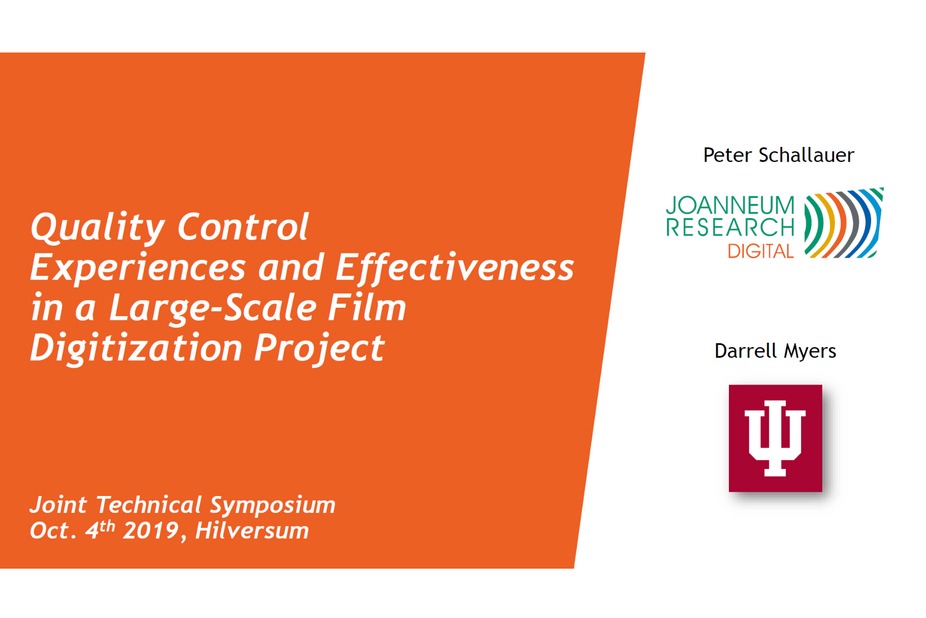At this year’s Joint Technical Symposium, Peter Schallauer from JOANNEUM RESEARCH gave a talk on “Quality Control Experiences and Effectiveness in a Large-Scale Film Digitization Project”.
In 2017, Indiana University (IU) launched the film phase of the Media Digitization and Preservation Initiative (MDPI), which will result in over 25.000 large and small gauge film reels digitally preserved by the university’s 2020 bi-centennial. While partnering with a service provider has resulted in a very high throughput digitization workflow to meet its ambitious timeline IU has additionally created an extensive automatic and interactive quality control workflow to guarantee specifications for aural and visual quality and structural standards are met.
This presentation provides an overview of the MDPI film phase, focusing on quality control needs and its implementation with IU’s practical experience in using the film scanning quality control software VidiCert to efficiently and cost effectively check thousands of files. We discuss the innovative approach to quality control for film which automates error detection for the QC operator to quickly review files and make decisions that guarantee quality digitization and preservation.
Indiana University reports on hands-on experiences made in the almost two years of QC operations, including multiple examples of image and sound issues detected during this phase.
For the first time long-term and high volume statistics on the type and frequency of human verified, critical scanning issues, such as dust/dirt, framing error, over/under exposure, crackle, splices and unsteadiness are shared along with experiences made in the first 21 month of operations where more than 6400 hours have been QC’d and consequently partially be re-scanned.
Furthermore, an analysis is presented on what share of scanning issues can be avoided, by re-scanning films showing unacceptable quality in the first scan. As a result, an average of 82% of the problems discovered with VidiCert during the first scan can be avoided by re-scanning. This demonstrates clearly the effectiveness of the QC and re-scan workflow established in India's large film digitization project.
The presentation with more details is available here.

